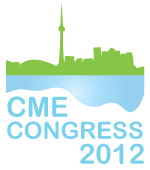Simon Kitto1,2,3; Mary Bell 4; Jennifer Peller 1; Joan Sargeant 5; Edward Etchells 4; Joanne Goldman1,6; Scott Reeves1,3,6; Ivan Silver7.
1 Wilson Centre, University of Toronto, Toronto, Canada. 2 Office of Continuing Education and Professional Development, Faculty of Medicine, University of Toronto, Toronto, Canada. 3 Li Ka Shing Knowledge Institution, St. MIchael’s Hospital, Toronto Ontario. 4 Department of Medicine, Faculty of Medicine, University of Toronto, Toronto, Canada. 5 Continuing Medical Education Health and Medical Education Research, Division of Medical Evaluation, Dalhousie University, Halifax, Canada. 6 Centre for Faculty Development, St. Michael’s Hospital, Toronto, Canada. 7 Centre for Addiction and Mental Health, Toronto, Canada.
Funding Sources
AFMC SCCME National CME/CPD Research Fund. There are no conflicts of interest.
Short Synopsis
This study explores the historical, political, economic and epistemological divisions and intersections between the domains CE, KT, PS and QI as represented in the literature and understood by key informants in each domain.
Purpose
This project aims to comprehensively map the conceptual and practiced relationships/interactions between the domains in order to clarify their similarities and differences; identify opportunities for integration across the domains at the level of theory, methodology and practice; identify how best principles (theory, methodology and practice) from KT, PS and QI can be adapted and applied to the CE domain; and identify how CE can be positioned more centrally in KT, PS and Qi activities.
Methods
this study explores interview accounts of participants’ understandings and perceptions of the historical, political, economic and epistemological divisions and intersections between the domains and triangulates the results with a discourse analysis of unpublished documents from each domain.
Results
A conceptual matrix of the interconnections, divisions and integration of CE, KT, PS and Qi was formulated through a directed context thematic analysis. Three major themes emerged 1) variations in participants’ understandings of the purpose, function, theories and methodologies of their own domain; 2) variations in participants’ understandings of the purpose, function, theories and methodologies of domain areas outside of their expertise; 3) obstacles to collaboration shaped by historical, political, economic and knowledge differences between the domains.
Conclusions
The results demonstrate several sites for intersection for, and barriers to, collaboration across the domains. A more explicit shared understanding and language of healthcare intervention can facilitate an integrated partnership across CE, KT, PS and QI. This is the first step in promoting networking, information sharing, collaboration, and competition amongst the four domains to generate effective interdisciplinary healthcare interventions.





